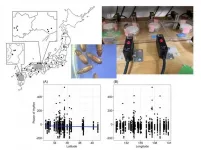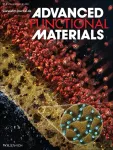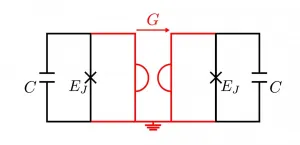A new piece of the HIV infection puzzle explored
2021-02-18
(Press-News.org) Scientists at EMBL Heidelberg and at the Zentrum für Infektiologie at Heidelberg University Hospital have succeeded for the first time in imaging HIV during transport into the nucleus of an infected cell. The electron tomographic images show the protein envelope of the virus passing through one of the nuclear pores - the openings in the membrane around the nucleus that allow molecules in and out. The scientists found that the virus passes through the nuclear pore intact, only breaking apart inside the nucleus, where it releases its genetic information. This clarifies an important mechanism by which the virus's genetic material is integrated into the genome of the infected cell.
The human immunodeficiency virus type 1 (HIV-1) - which was the focus of this study - primarily infects certain cells of the immune system, and in this way massively weakens the body's own defence against diseases. The genetic material of the virus is securely packaged in a cone-shaped protein capsule known as the capsid, which is composed of individual hexagonal parts. Scientists knew how the capsid passes through the cell membrane into the interior of the cell during infection, but not how the virus's genetic material gets from the capsid into the cell nucleus, where it triggers the formation of new viruses.
This is where the work of the Heidelberg collaboration comes in. Using newly developed methods for 3D imaging of molecular complexes in virus-infected cells, the scientists succeeded in imaging the viral capsid directly during transport into the nucleus. "Until now, it was assumed that the capsid does not fit through the pores," explains Hans-Georg Kräusslich, Medical Director of the Zentrum für Infektiologie. "However, the question of how the viral genome gets into the cell nucleus is essential for its reproduction. Our results therefore support the search for new targets for future therapeutic approaches." Although current treatment options can suppress multiplication of the virus in the body, a true cure that eliminates the virus is not yet possible.
Platforms for high-resolution imaging
To get a detailed look at the inner workings of infected immune cells in the laboratory, the scientists used high-resolution imaging techniques. With the help of the Electron Microscopy Core Facility at Heidelberg University and the Cryo-Electron Microscopy Service Platform at EMBL Heidelberg, they combined light and electron microscopy methods. They were able to reconstruct 3D images of the molecular structures from their data. This allowed them to visualise the composition and architecture of the viral complexes and their interaction with cellular structures in high resolution. "The fruitful collaboration between our two institutions and the combination of specialised technology has helped to fit another piece of the HIV infection puzzle into the overall picture," says Martin Beck, a visiting group leader at EMBL and, since 2019, a Director and Scientific Member of the Max Planck Institute of Biophysics.
INFORMATION:
ELSE PRESS RELEASES FROM THIS DATE:
2021-02-18
A highly porous metal organic framework, assembled from molecular building blocks designed to lock together in a specific orientation, has been developed by researchers at KAUST.
Metal organic frameworks (MOFs) are crystalline materials made from metal ions connected by organic linkers. Their internal structure is like a repeating array of tiny identical cages, which are ideal for hosting various molecules. MOFs have found potential uses from gas sensing to molecular separations to storage, depending on the dimensions and structure of their pores.
One family of MOFs has been inspired by inorganic porous materials called zeolites. Zeolites are a special class of porous material with ...
2021-02-18
One of the most intriguing features in all living beings is the "biological clock", an internal time-keeping mechanism that governs our behavioral pattern (such as the sleep-wake cycle). In fact, the biological clock dictates the developmental timing of various processes, such as when flowers bloom and insects reproduce. Biologists refer to these activities collectively as "circadian rhythms," owing to the rhythmic pattern in which they occur.
Since their discovery, circadian rhythms have been studied extensively, and today we know a great deal about how they work. ...
2021-02-18
When women undergo surgical treatment for breast cancer, they often also have reconstructive surgery but new QUT research reveals many women feel left out of the decision making.
An interdisciplinary study from researchers in QUT's Centre for Behavioural Economics, Society and Technology (BEST), Engineering Faculty, and School of Nursing, along with Dr Jeremy Hunt a Fellow of the Royal Australasian College of Surgeons and Dr Tim Peltz from the University of New South Wales, on Knowledge, consultation time and choice in breast reconstruction has just been published in the British Journal of Surgery.
"Approximately one in seven Australian women will be diagnosed with breast cancer in their lifetime," ...
2021-02-18
Most Chinese working in the cities return to work today after a 7-day public holiday of Spring Festival. The annual Spring Festival, which also marks the start of Chinese New Year, traditionally begins with the second new moon following the winter solstice, usually in January or February. Like westerners on Thanksgiving and Christmas, people across China return to their hometown to reunite with family and friends. However, the sudden outbreak of COVID-19 last year halted the largest holiday mobilization in the world. In response to the crisis, in late 2019, local governments launched ...
2021-02-18
After nearly a decade of research, a new test that detects the magnetic properties of malaria-infected blood could soon be used to help eliminate the mosquito-borne disease.
Dr Stephan Karl, a Senior Research Fellow in Malaria and Vector Biology at James Cook University's Australian Institute of Tropical Health and Medicine, has led an international study to field-test a new tool in the fight to eliminate the disease, which had 229 million reported cases in 2019.
"Malaria is easily treated but it is actually hard to diagnose, and because of that there ...
2021-02-18
Quantum computers promise not only to outperform classical machines in certain important tasks, but also to maintain the privacy of data processing. The secure delegation of computations has been an increasingly important issue since the possibility of utilizing cloud computing and cloud networks. Of particular interest is the ability to exploit quantum technology that allows for unconditional security, meaning that no assumptions about the computational power of a potential adversary need to be made.
Different quantum protocols have been proposed, all of which make trade-offs between computational performance, security, and resources. Classical protocols, for example, are either limited ...
2021-02-18
Sample pretreatment processes such as concentration or classification are essential to finding trace substances present in a fluid. In scientific communities recently, prolific research is being conducted on sample pretreatment techniques utilizing electrokinetics.1 However, due to the lack of commercial anion-permselective material - an essential component - its potential application is limited to only negatively charged particles. To this, a research team at POSTECH has found a way to isolate and concentrate only the cationic samples.
A POSTECH research team led by Professor Geunbae Lim, Ph.D. candidate Minsoo Lee, and Dr. Hyukjin J. Kwon of the Department of Mechanical Engineering developed a novel type of multiscale-porous anion exchange ...
2021-02-18
Genetic variation is like money in the bank: the more you have, the better your chances of survival in the future. Population bottlenecks decrease genetic variation, especially in endangered species. An individual's genome comprises the events that have impacted genetic variation over time, and relatively recent sequencing technologies allow us to read and interpret genetic variation across the genome. Although tigers have received significant conservation attention, little is known about their evolutionary history and genomic variation. This is especially true for Indian tigers, and ...
2021-02-18
Working with colleagues from Germany and the US, researchers at Leipzig University have achieved a breakthrough in research into how cancer cells spread. In experiments, the team of biophysicists led by Professor Josef Alfons Käs, Steffen Grosser and Jürgen Lippoldt demonstrated for the first time how cells deform in order to move in dense tumour tissues and squeeze past neighbouring cells. The researchers found that motile cells work together to fluidise tumour tissue.
Käs led the research project in cooperation with Professor Lisa Manning from Syracuse University (US) and Professor Bahriye Aktas from Leipzig University Hospital. They have now ...
2021-02-18
Building a universal quantum computer is a challenging task because of the fragility of quantum bits, or qubits for short. To deal with this problem, various types of error correction have been developed. Conventional methods do this by active correction techniques. In contrast, researchers led by Prof. David DiVincenzo from Forschungszentrum Jülich and RWTH Aachen University, together with partners from the University of Basel and QuTech Delft, have now proposed a design for a circuit with passive error correction. Such a circuit would already be inherently fault protected and could significantly accelerate the construction of a quantum computer with a large number of qubits.
In order to encode quantum information ...
LAST 30 PRESS RELEASES:
[Press-News.org] A new piece of the HIV infection puzzle explored





